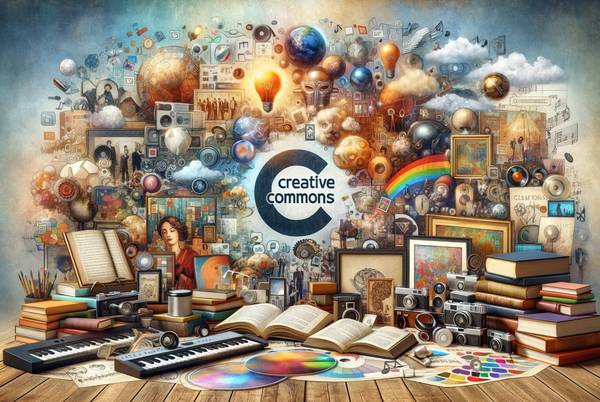Understanding creative commons: a guide to open licensing
Originally published: 31 December 2023
What the heck is creative commons license? Let's find out.

Understanding Creative Commons: A Guide to Open Licensing
Creative Commons (CC) licenses are vital tools in the modern digital world, empowering creators to share their work with specified usage rights. This post explores what Creative Commons licenses are and how to use them effectively.
What is a Creative Commons License?
Creative Commons is a nonprofit organization that offers a set of free, easy-to-use copyright licenses. These licenses allow creators to dictate how others can use their work.
The Types of Creative Commons Licenses
There are several types of CC licenses, each with different levels of permissions and restrictions:
- CC BY (Attribution): Allows others to distribute, remix, adapt, and build upon your work, even commercially, as long as they credit you.
- CC BY-SA (Attribution-ShareAlike): Similar to CC BY, but derivative works must be licensed under identical terms.
- CC BY-ND (Attribution-NoDerivs): Allows for redistribution, commercial and non-commercial, as long as the work is passed along unchanged and in whole, with credit to you.
- CC BY-NC (Attribution-NonCommercial): Others can remix, tweak, and build upon your work non-commercially, and although their new works must also acknowledge you and be non-commercial, they don’t have to license their derivative works on the same terms.
- CC BY-NC-SA (Attribution-NonCommercial-ShareAlike): Others can remix, tweak, and build upon your work non-commercially, as long as they credit you and license their new creations under the identical terms.
- CC BY-NC-ND (Attribution-NonCommercial-NoDerivs): Allows others to download your works and share them with others as long as they credit you, but they can’t change them in any way or use them commercially.
How to Use Creative Commons Licenses
For Content Creators:
- Choose a License: Determine which CC license best suits your needs based on how you want your work to be used.
- Apply the License: You can use the Creative Commons Choose a License tool to generate a license.
- Mark Your Work: Include the CC license badge or text with your work. For digital content, you can embed the license directly into files or use it in the metadata.
For Content Users:
- Check the License Terms: Understand the specifics of the CC license attached to the work you intend to use.
- Follow the License Requirements: This typically involves giving appropriate credit, not using the material for commercial purposes, and not applying additional restrictions that the original license didn’t have.
- Respect the Creator’s Intentions: Adhering to the license terms respects the creator’s intentions and legal rights.
Benefits of Using Creative Commons
- Flexibility: CC licenses offer different levels of freedom, catering to various preferences of content creators.
- Promotes Sharing and Innovation: They facilitate the legal sharing and remixing of content, encouraging collaboration and innovation.
- Global Recognition: CC licenses are recognized and used worldwide, making them a standard for open content.
Conclusion
Creative Commons licenses are powerful tools for both content creators and users. They foster a culture of sharing, collaboration, and innovation in the digital age. By understanding and utilizing these licenses, we can contribute to a more open and connected world.
Read Count: 0
 Facebook
Facebook
 Twitter
Twitter
 Email
Email